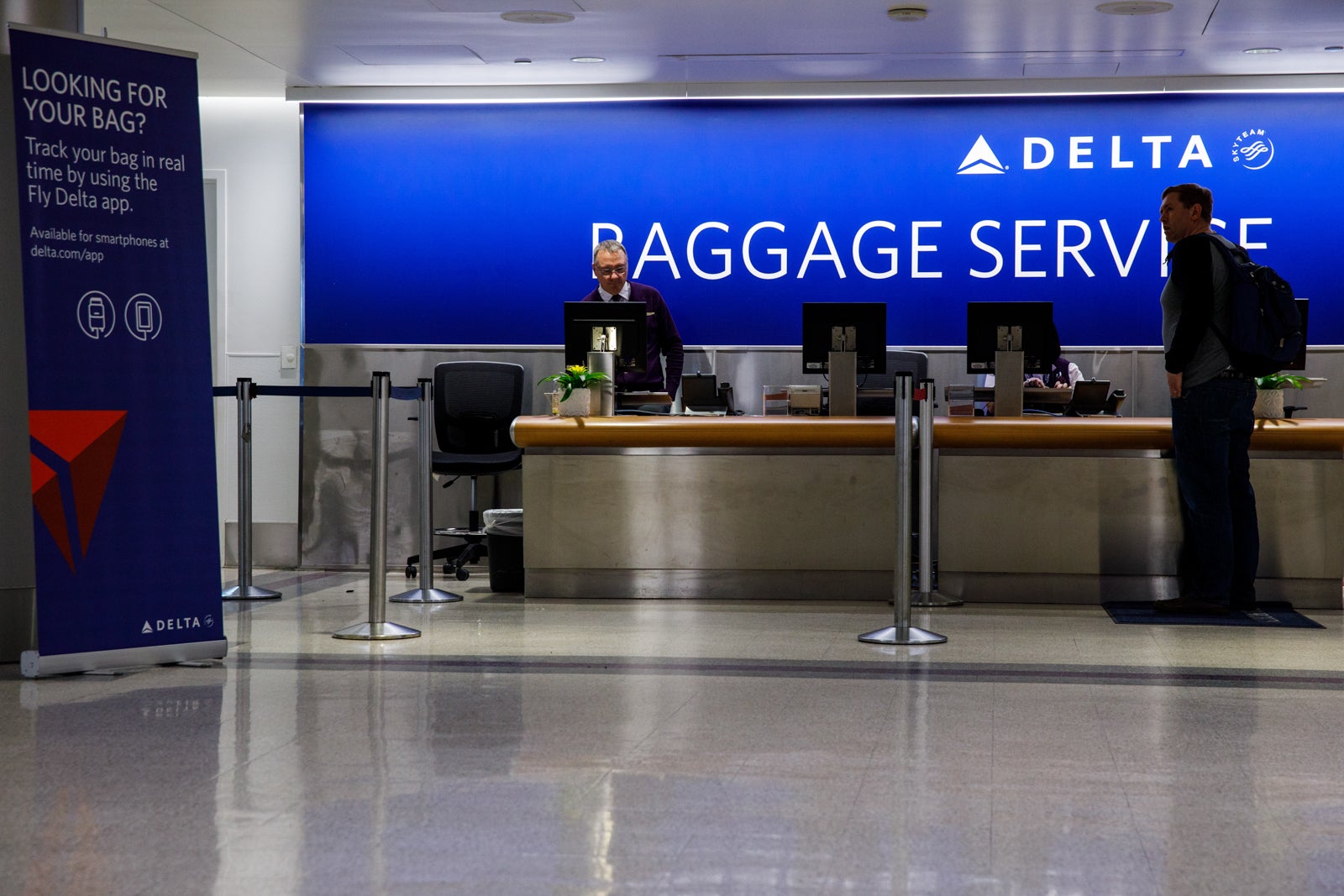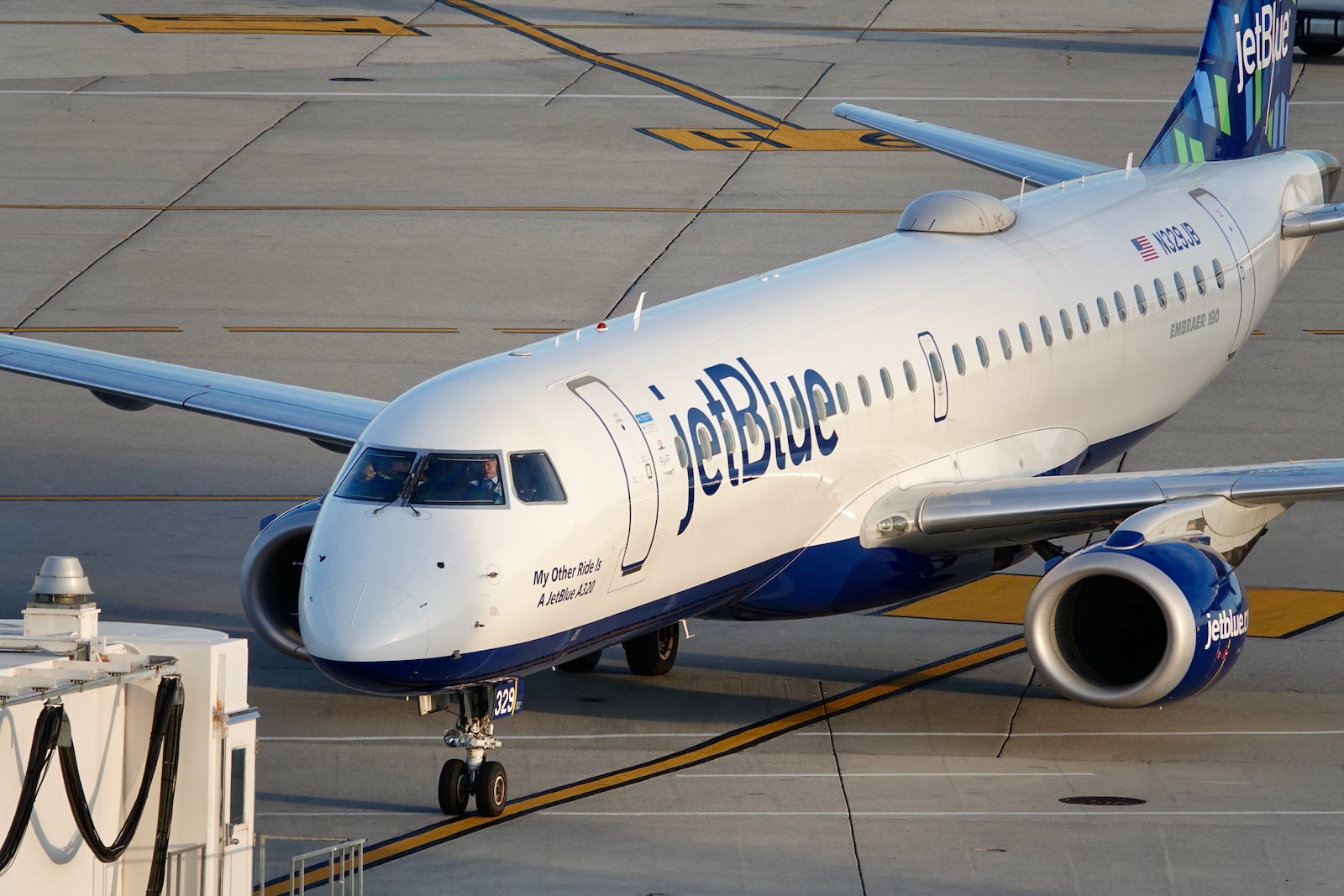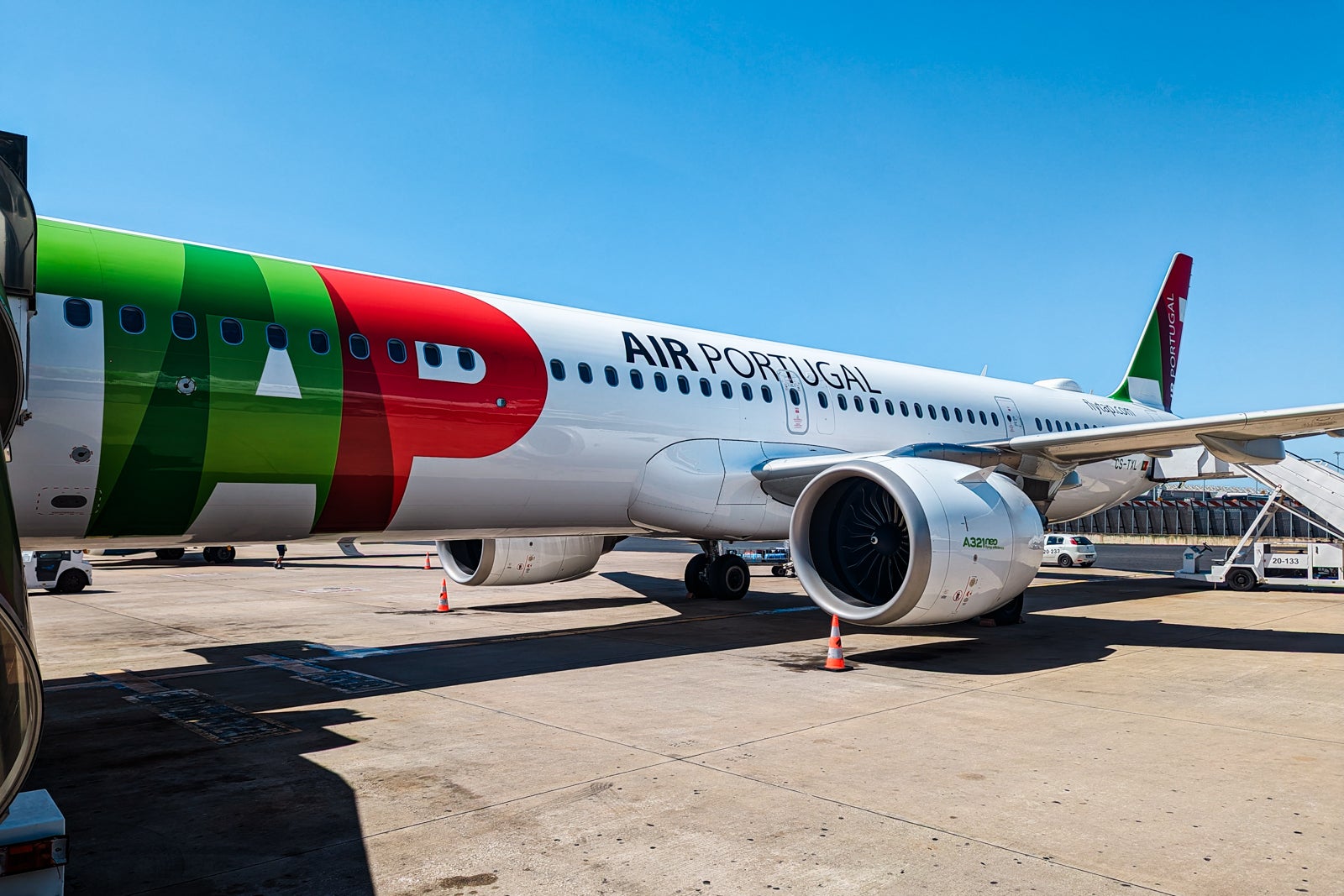Travel insurance comparison: Chase Sapphire Reserve vs. American Express Platinum
The Chase Sapphire Reserve® and The Platinum Card® from American Express are two of the most popular travel rewards cards. After all, both cards offer valuable transferable rewards, lounge access and the ability to receive elite-like perks when booking hotels through Amex’s Amex Fine Hotels + Resorts program and The Edit by Chase Travel℠.
Like many of the top rewards cards, the Chase Sapphire Reserve and Amex Platinum Card also provide travel insurance when you use your card to book travel. In particular, these two premium travel rewards cards offer an excellent combination of trip insurance and bonus earnings on select travel purchases. So, in this guide, let’s compare the travel insurance provided by these two cards.
Overview of the travel insurance provided by these cards
Chase Sapphire Reserve Amex Platinum Trip delay insuranceUp to $500 per ticket when you’re delayed by six-plus hours or overnight Up to $500 per covered trip when you’re delayed by six-plus hours, with a maximum of two claims per eligible card within a 12-month period* Baggage delay insuranceUp to $100 per day for up to five days when your baggage is delayed by six-plus hours None Trip cancellation/interruption insuranceUp to $10,000 per person, up to $20,000 per trip Up to $10,000 per trip and up to $20,000 per card per 12-month period* Auto rental collision damage waiverPrimary insurance up to $75,000 for theft and collision damage Secondary insurance up to $75,000 for theft, damage, loss of use and other fees^ Emergency medical and dental benefitUp to $2,500 for emergency medical expenses, subject to a $50 deductible
Up to $75 per day for up to five days for a hotel room after a hospital stay
None Emergency evacuation insuranceUp to $100,000 when you pay for at least part of your common carrier travel with the card. Evacuation must be preapproved by the benefit administrator in order to be covered. Can be provided at no cost to you if coordinated through and approved by the Premium Global Assist Hotline Lost luggage reimbursementUp to $3,000 per person, with a $500 cap on jewelry and watches and a $500 cap on cameras and other electronic equipment. Up to $3,000 per person (up to $2,000 for checked luggage) when traveling on a common carrier, with a $1,000-per-person cap on high-value items. For New York state residents, there is a maximum of $2,000 per bag for each person with a $10,000 aggregate maximum for all covered bags and covered persons on the trip. The entire fare for your trip (one-way or round-trip) must be paid for with your eligible card for this benefit to take effect.†Roadside assistanceUp to $50 per service event, up to four times per year None Travel accident insuranceUp to $1 million loss of life common carrier insurance per person
Up to $100,000 loss of life travel accident insurance per person
None
* Eligibility and benefit level varies by card. Terms, conditions and limitations apply. Visit americanexpress.com/benefitsguide for details. Policies are underwritten by New Hampshire Insurance Company, an AIG Company.
^ Eligibility and benefit level varies by card. Not all vehicle types or rentals are covered, and geographic restrictions apply. Terms, conditions and limitations apply. Visit americanexpress.com/benefitsguide for details. Policies are underwritten by AMEX Assurance Company. Coverage is offered through American Express Travel Related Services Company, Inc.
# Eligibility and benefit level varies by card. Terms, conditions and limitations apply. Visit americanexpress.com/benefitsguide for details. If approved and coordinated by Premium Global Assist Hotline, emergency medical transportation assistance may be provided at no cost. In any other circumstance, cardmembers are responsible for the costs charged by third-party service providers.
† Eligibility and benefit level varies by card. Terms, conditions and limitations apply. Visit americanexpress.com/benefitsguide for details. Policies are underwritten by AMEX Assurance Company.
As you can see in the table above, the Amex Platinum doesn’t provide baggage delay insurance, emergency medical and dental benefits, roadside assistance or travel accident insurance. For brevity, I won’t discuss the types of insurance the Amex Platinum doesn’t provide any further in this guide.

Daily Newsletter
Reward your inbox with the TPG Daily newsletter
Join over 700,000 readers for breaking news, in-depth guides and exclusive deals from TPG’s experts
Instead, I’ll compare the protections head-to-head for the types of insurance provided by both cards. You can find the guide to benefits for both cards as follows:
And to learn more about both cards, check out our Chase Sapphire Reserve credit card review and Amex Platinum card review.
Related: Amex Platinum vs. Chase Sapphire Reserve: Which card is right for you?
Trip delay insurance
Trip delay insurance may provide reimbursement for reasonable expenses during a delay when traveling on a common carrier. Here’s a comparison of the Chase Sapphire Reserve‘s and Amex Platinum Card‘s trip delay insurance.
| Chase Sapphire Reserve | Amex Platinum | |
|---|---|---|
| Maximum reimbursement | Up to $500 per ticket when you’re delayed by six-plus hours or overnight | Up to $500 per covered trip when you’re delayed by six-plus hours, with a maximum of two claims per eligible card within a 12-month period* |
| What can be reimbursed | Reasonable additional expenses incurred during a covered trip delay, including meals, lodging, toiletries and medication | Reasonable additional expenses including, but not limited to, meals, lodging, toiletries, medicine and other personal use items |
| How long a delay is required | Six-plus hours or overnight | Six-plus hours |
| Who is covered | You, your spouse or domestic partner and your legally dependent children under 26 years old |
You, your spouse or domestic partner, your unmarried dependent child up to 19 (or under 26 if a full-time student at an accredited college or university) and traveling companions |
| How to get coverage | Charge all or a portion of a common carrier fare to your credit card account and/or rewards programs associated with your account. | Charge the full amount of transportation by common carrier to your card or in combination with accumulated points on your card or redeemable certificates, vouchers, coupons or discounts awarded from a frequent flyer program or similar program. |
| What is covered | Delays caused by equipment failure, inclement weather, strike and hijacking/skyjacking | Delays caused by inclement weather, terrorist action or hijacking, common carrier equipment failure and lost or stolen passports or travel documents. |
| What isn’t covered | Any delay due to a covered hazard that was made public or made known to you before your departure
Any prepaid expenses related to your covered trip |
Covered losses that are made public or known to the traveler before departure
Expenses paid before the covered trip Loss due to intentional acts by the traveler |
| Other restrictions | Travel must not exceed 365 days
Travel must be to a destination other than the traveler’s city of residence |
Requires round-trip travel to one or more destinations other than the traveler’s city of residence, consisting of round-trip, one-way or a combination of one-way and round-trip bookings
Period of round-trip travel must not exceed 365 days away from the traveler’s city of residence |
*Eligibility and benefit level varies by card. Terms, conditions and limitations apply. Visit americanexpress.com/benefitsguide for details. Policies are underwritten by New Hampshire Insurance Company, an AIG Company.
As you may gather from the above table, the primary differences in trip delay coverage are:
- The Amex Platinum requires round-trip travel, which you must buy with your card (in whole or combination with other eligible methods)
- The Amex Platinum doesn’t cover overnight delays that are less than six hours
- The Amex Platinum caps your claims to two per 12-month period
- The Amex Platinum covers traveling companions as long as you pay for their round-trip common carrier fares with your card.
- The Chase Sapphire Reserve explicitly covers delays due to strikes, while the Amex Platinum explicitly covers delays due to lost or stolen passports or travel documents.
Related: Chase paid for my $1,100-per-night hotel room thanks to built-in trip delay coverage
Trip cancellation/interruption insurance
Trip cancellation and interruption insurance may provide reimbursement for nonrefundable, prepaid trip expenses when you must cancel or alter a trip due to a covered situation. In some cases, you may be covered for additional expenses.
Here’s a comparison of the Chase Sapphire Reserve‘s and Amex Platinum Card‘s trip cancellation and interruption insurance:
| Chase Sapphire Reserve | Amex Platinum | |
|---|---|---|
| Trip cancellation benefit may reimburse | Nonrefundable prepaid travel expenses charged by a travel supplier (not including event tickets or prepaid fees to theme parks, museums, golf courses or other points of interest unless part of a package)
Redeposit fees imposed by a rewards program |
Nonrefundable amount paid to a travel supplier with your card* |
| Trip interruption benefit may reimburse | Nonrefundable prepaid travel expenses charged by a travel supplier (not including event tickets or prepaid fees to theme parks, museums, golf courses or other points of interest unless part of a package)
Redeposit fees imposed by a rewards program. Change fees Costs to return a rental vehicle to the closest rental agency or your car to your closest leased or owned residence |
The forfeited, non-refundable, pre-paid land, air and sea transportation arrangements that were missed
Additional transportation expenses that the traveler incurs (less any available refunds) and not to exceed the cost of an economy-class air ticket by the most direct route for the traveler to rejoin their trip or to return to their of origin Additional expenses incurred to purchase tickets for a new departure |
| Who is covered | You and your immediate family members | You, your spouse or domestic partner, your unmarried dependent child up to 19 (or under 26 if a full-time student at an accredited college or university) and traveling companions |
| How to get coverage | Charge all or a portion of a trip to your credit card account and/or rewards programs associated with your account | Charge the full amount of round-trip transportation by common carrier to your card or in combination with accumulated points on your card or redeemable certificates, vouchers, coupons or discounts awarded from a frequent flyer program or similar program. Round-trip travel may be booked as a round-trip itinerary or a combination of one-way and round-trip bookings. |
| Maximum coverage | $10,000 per covered person, up to $20,000 per trip and up to $40,000 per 12-month period. Trip interruption coverage also provides a maximum of $250 for ground transportation needs. | $10,000 per covered trip and $20,000 per eligible card in 12 consecutive months |
| Other restrictions | Trips scheduled to last longer than 60 days aren’t covered.
Excludes preexisting conditions, medical travel, civil unrest and travel booked past the 26th week of pregnancy Most additional transportation expenses will not be reimbursed |
Requires round-trip travel to one or more destinations other than the traveler’s city of residence, which can be a combination of one-way and round-trip travel
Period of round-trip travel must not exceed 365 days away from the traveler’s city of residence Excludes preexisting conditions, financial insolvency of a travel supplier, travel for paid participation in a sport, any parachuting or race activities and non-emergency medical treatments |
* Eligibility and benefit level varies by card. Terms, conditions and limitations apply. Visit americanexpress.com/benefitsguide for details. Policies are underwritten by New Hampshire Insurance Company, an AIG Company.
As you can see in the above table and the related benefits guides, the primary differences in trip cancellation and trip interruption coverage are:
- The Amex Platinum requires round-trip travel, paid with your card (in whole or in combination with other eligible methods). Only travel expenses put on the card used for round-trip common carrier travel will be covered.
- The Amex Platinum covers traveling companions as long as you pay for their round-trip common carrier fares with your card.
- The Amex Platinum may cover the cost to return home or rejoin the trip if your trip is interrupted.
- The Chase Sapphire Reserve may reimburse redeposit fees imposed by a rewards program if your trip is canceled or interrupted, as well as change fees and car positioning fees if your trip is interrupted.
- The Chase Sapphire Reserve covers more types of losses, including if your accommodation at your destination is made uninhabitable or your host at your destination dies or is hospitalized.
- The Amex Platinum excludes losses related to mental or emotional disorders unless hospitalized. The Amex Platinum also excludes losses that occur when you’re intoxicated. The Chase Sapphire Reserve excludes any loss for any trip booked while on a waiting list for specified medical treatment.
Auto rental collision damage waiver
The collision damage waiver offered by both cards can cover your rental car if you’re in an accident or if it’s stolen or damaged. Here’s a comparison of the Chase Sapphire Reserve‘s and Amex Platinum Card‘s rental car insurance.
| Chase Sapphire Reserve | Amex Platinum | |
|---|---|---|
| Coverage type | Primary | Secondary^ |
| Maximum coverage | $75,000 | $75,000 |
| How to get coverage | You use your credit card account and/or rewards programs associated with your account to initiate and complete the entire car rental transaction.
You decline the rental company’s collision damage waiver option. |
You reserve and pay for the entire rental using your eligible card or using Membership Rewards points.
At the rental company counter, you decline coverage for full collision damage waiver (CDW), personal accident insurance, personal property coverage and similar coverage. |
| Who is covered | The cardholder and any authorized drivers on the car rental contract when the cardholder is the primary driver | The cardmember, their spouse or domestic partner and authorized drivers |
| What is covered | Theft, damage, valid loss-of-use charges, administrative fees and reasonable and customary towing charges to the nearest qualified repair facility | Damage, theft, reasonable and customary charges related to the rental vehicle after the damage or theft, such as loss of rental vehicle use, appraisal fees provided they are supported with verifiable documentation, towing charges and storage, which are charged by the nearest vendor or facility capable of rendering assistance |
| Excluded vehicle types | Antique cars
Cargo vans, vehicles with open cargo beds, trucks other than pickups Motorcycles, mopeds, motorbikes Limousines Recreational vehicles Passenger vans with seating for more than 9 people |
Cargo vans, custom vans, vans with a seating capacity over eight passengers, cube van or box truck, any truck that has a gross vehicle weight rating of 10,000 lbs. or more or commercial uses of vehicles
Leased or mini-leased vehicles Cars that are at least 20 years old or have not been manufactured within 10 or more years before the date of the rental agreement Limousines Off-road vehicles, motorcycles, mopeds, recreational vehicles, golf or motorized carts, campers, trailers and any other vehicle which is not provided by a rental company Rentals from a company that is a moving van rental company or a business whose primary operation is not vehicle rentals, as well as peer-to-peer rentals |
| Other restrictions | Rental periods of up to 31 days are covered
New York state residents will not have primary coverage; coverage will be secondary unless residents don’t have personal insurance. New York residents will have primary coverage when renting cars outside the US. |
Rental periods of up to 30 days are covered
Excludes rentals in Australia, Italy and New Zealand
|
^ Eligibility and benefit level varies by card. Not all vehicle types or rentals are covered, and geographic restrictions apply. Terms, conditions and limitations apply. Visit americanexpress.com/benefitsguide for details. Policies are underwritten by AMEX Assurance Company. Coverage is offered through American Express Travel Related Services Company, Inc.
As you can see in the above table and the related guide to benefits, the primary differences in car rental collision damage protection are:
- The Chase Sapphire Reserve covers more types of vehicles
- The Chase Sapphire Reserve provides primary coverage
- The Chase Sapphire Reserve doesn’t have country exclusions
- The Amex Platinum offers coverage to spouses when payment is made with an eligible card
- While the Amex Platinum coverage specifically mentions peer-to-peer rentals, it’s unlikely your Sapphire Reserve would cover Turo rentals
If you’d prefer to get primary coverage for rental cars when using American Express cards, you can enroll in American Express Premium Car Rental protection.
Related: 11 common rental car mistakes — and how to avoid them
Emergency evacuation and transportation insurance
The emergency evacuation and transportation insurance provided by these cards can arrange and pay for necessary emergency medical transport and evacuation under eligible circumstances. Here’s a comparison of the Chase Sapphire Reserve‘s and Amex Platinum Card‘s emergency evacuation and transportation insurance.
| Chase Sapphire Reserve | Amex Platinum | |
|---|---|---|
| What coverage is provided | Necessary emergency evacuation and transportation expenses up to $100,000 to the nearest hospital where you can obtain appropriate medical treatment or to your residence. | Medical transport and evacuation from an inadequate facility to a more appropriate medical facility, as decided by the Premium Global Assist Hotline
Economy-class flights home for the evacuee and one family member if the original ticket becomes invalid as a result of the evacuation. |
| How to get coverage | Charge any portion of a common carrier fare or travel agent booking to your credit card account and/or rewards programs associated with your account. | Be a cardmember |
| Who is covered | You, your spouse and eligible children under age 19 (or under 26 if enrolled as a full-time student at an accredited university). | The cardmember and additional cardmembers
The cardmember’s spouse or domestic partner and dependent children under 23 or under 26 if enrolled in school on a full-time basis (all when traveling on the same trip itinerary as the cardmember) |
| Other restrictions | The benefit administrator must preapprove transport to be covered.
Duration of the trip cannot be less than 5 days or more than 60 days and must be over 100 miles from the traveler’s residence (distance requirement waived for New York residents). |
Transport must be authorized and arranged through the Premium Global Assistance program to be covered.
The cardmember is traveling on a trip of 90 days or less, beginning at the cardmember’s U.S. billing address and traveling 100 miles or more from that address. |
# Eligibility and benefit level varies by card. Terms, conditions and limitations apply. Visit americanexpress.com/benefitsguide for details. If approved and coordinated by Premium Global Assist Hotline, emergency medical transportation assistance may be provided at no cost. In any other circumstance, cardmembers are responsible for the costs charged by third-party service providers.
As you can see in the above table and the related guide to benefits, the primary differences in the emergency medical evaluation benefit are:
- You’re covered by the Amex Platinum even if you use another card to purchase your common carrier fare, whereas you must at least partially pay with the Chase Sapphire Reserve or associated rewards to be covered.
- The Chase Sapphire Reserve has stricter requirements for trip length.
- Both cards offer additional benefits that can bring a family member to your side or return now-unaccompanied minors home.
Related: A Medjet medical transport membership is different than travel insurance. Here’s why you need both
Lost luggage reimbursement
The lost luggage benefit offered by both cards may reimburse you if your baggage is lost, damaged or stolen during a trip. Here’s a comparison of the lost luggage reimbursement provided by the Chase Sapphire Reserve and Amex Platinum Card.
| Chase Sapphire Reserve | Amex Platinum | |
|---|---|---|
| Maximum coverage | Up to $3,000 per person per trip, including a limit of $500 per person per trip for jewelry and watches and a limit of $500 per person per trip for cameras and other electronic equipment | Up to $3,000 per person for carry-on baggage and up to $2,000 per person for checked baggage, with a limit of $1,000 per person for high-risk items. For New York residents, the maximum coverage is $2,000 per bag per person and $10,000 aggregate per covered trip.† |
| How to get coverage | Charge all or a portion of a common carrier fare to your credit card account and/or rewards programs associated with your account. | Purchase the entire fare for a common carrier vehicle ticket on an eligible card or using Amex Membership Rewards points. |
| Who is covered | You and your immediate family members | You, your spouse or domestic partner, your dependent children under 23 years of age and select older dependant children who are incapacitated |
| What is covered | Checked baggage, carry-on baggage and/or personal property contained within due to loss, damage or theft occurring during a trip | The replacement cost of baggage in the event of damage or loss while in direct transit to or from a common carrier’s terminal to board or exit a common carrier vehicle or when baggage is checked in with or carried on the common carrier |
| What isn’t covered | War-related losses
Items that have been removed from carry-on baggage by you and inadvertently left behind on the common carrier or cruise line Documents or valuable papers Money or securities Tickets Checks or travelers’ checks Furs |
War-related losses
Acts of customer or other government authority (excluding TSA) Credit cards and other travel documents (including passports and visas) Securities Documents and tickets of any kind Traveler’s checks and other negotiable instruments (including gift certificates, gift cards, gift checks, food stamps), cash or its equivalent, notes, accounts, bills, currency, deeds, evidence of debt or intangible property, rare stamps or coins. Living plants and animals Food, consumable and perishable items Eyeglasses, sunglasses and contact lenses Hearing aids and prosthetic devices Prescription or nonprescription drugs Property shipped as freight or shipped before the departure date |
| Other restrictions | You must report the loss to the common carrier within the carrier’s required time frame for checked baggage.
For carry-on baggage, you must report the loss to the carrier as soon as you exit. |
Trips can not exceed 365 days
You must report the loss to the common carrier within the carrier’s required time frame |
† Eligibility and benefit level varies by card. Terms, conditions and limitations apply. Visit americanexpress.com/benefitsguide for details. Policies are underwritten by AMEX Assurance Company.
As you can see in the above table and the related guide to benefits, the primary differences in lost luggage reimbursement are:
- The Amex Platinum explicitly notes that losses due to confiscation by TSA aren’t excluded.
- The Chase Sapphire Reserve covers a broader selection of family members when you pay for their ticket using your card.
- The cards exclude different types of items and types of loss.
Related: Everything you need to know about Amex’s baggage insurance plan
When should I use the Chase Sapphire Reserve vs. the Amex Platinum?
The Platinum Card from American Express earns 5 Amex Membership Rewards points per dollar spent on flights booked directly with airlines or with American Express Travel (on up to $500,000 of these purchases per calendar year, then 1 point per dollar) for an approximate 10% return based on TPG’s October 2024 valuations. The Chase Sapphire Reserve earns 10 Chase Ultimate Rewards points per dollar on hotels and rental cars purchased through Chase Travel℠, 5 points per dollar on flights booked through this portal, 10 points per dollar on Lyft rides through March 2025 and 3 points per dollar on all other travel (bonus points earning comes into effect after exhausting the $300 annual travel credit).
The Sapphire Reserve has an annual fee of $550, while the Amex Platinum Card has a $695 annual fee (see rates and fees).
Related: Amex Membership Rewards vs. Chase Ultimate Rewards: Which is the best?
Despite the earning gap (which can sway one way or the other, depending on how you book your flights), you may want to use the Chase Sapphire Reserve when booking some common carrier travel. I recommend checking out the guide to both cards’ benefits and considering which card is best for your travel expenses. To help, here are some reasons to consider each card.
Reasons to use the Chase Sapphire Reserve
- Offers a baggage delay benefit, an emergency medical and dental benefit, and roadside assistance up to $50 up to four times a year.
- Only a portion of your travel expenses must be charged to your card to unlock most benefits (whereas the Amex Platinum generally only provides benefits when you charge the entire common carrier fare to your card).
- No requirement for round-trip travel.
- Provides trip delay benefits if you’re delayed overnight for less than six hours.
- Provides primary car rental coverage.
- Offers travel accident insurance (although the Amex Platinum provides some travel accident insurance on car rentals).
- Includes strikes as an eligible reason for trip delay insurance.
- May reimburse redeposit fees imposed by a rewards program under trip cancellation/interruption insurance.
Reasons to use the Amex Platinum
- Provides an emergency medical evacuation benefit to cardmembers regardless of whether you charged any trip expenses to the card.
- Covers traveling companions for trip delay insurance and trip cancellation/interruption insurance when you purchase their round-trip fare with your card.
- May reimburse additional transportation expenses to rejoin the common carrier covered trip or return to the place of origin; also may cover the purchase of tickets for a new departure, under trip interruption insurance.
- Includes lost or stolen passports or travel documents as an eligible reason for trip delay insurance.
- Has a higher cap on high-value items for lost, damaged or stolen baggage.
- Some readers have found the claim process to be more straightforward and simple.
Bottom line
Some travelers who have both cards put their flights on the Amex Platinum to earn 5 points per dollar (up to the first $500,00 spent each calendar year, then 1 point per dollar) and put other travel expenses on the Chase Sapphire Reserve to earn 3 points per dollar and activate their trip cancellation and interruption protections.
You might want to keep the Amex Platinum primarily for Centurion Lounge access, hotel elite status and access to Amex Fine Hotels & Resorts, as well as valuable annual credits available to cardmembers.
However, you might want to avoid booking flights with the Amex Platinum because of the round-trip requirement and the lack of baggage delay protection. Instead, you’d prefer to use the Chase Sapphire Reserve for common carrier fares and other travel expenses.
Apply here: Amex Platinum
Apply here: Chase Sapphire Reserve
For rates and fees of the Amex Platinum card, click here.










